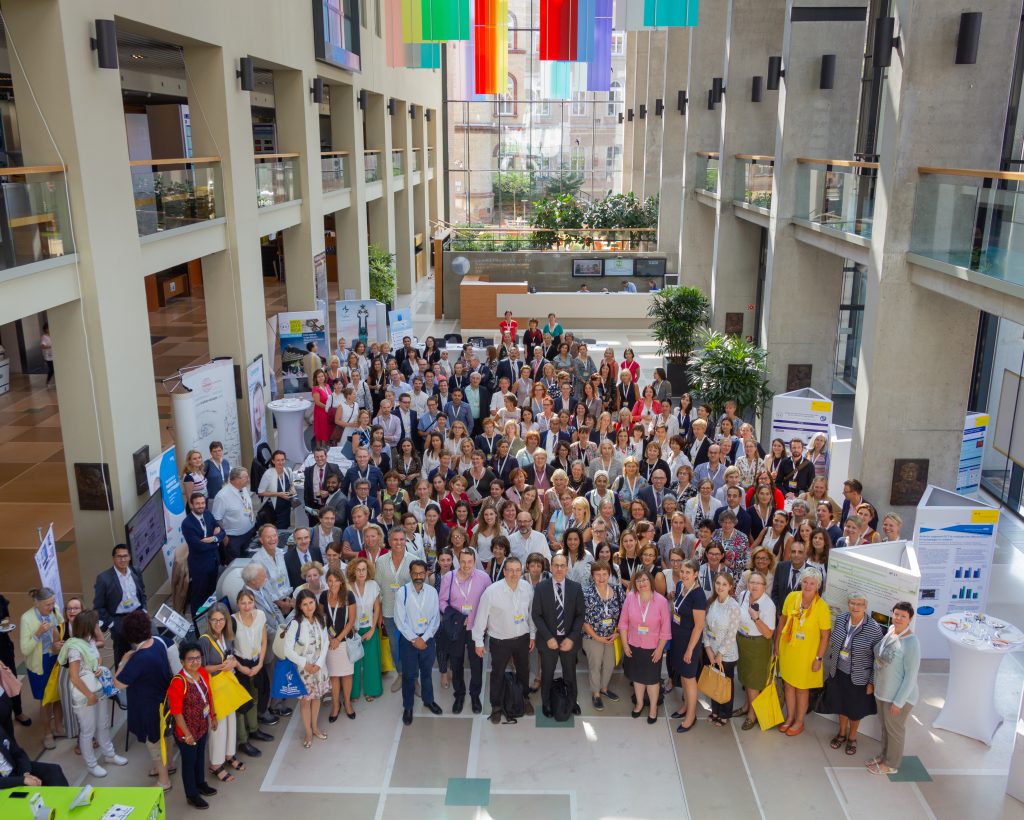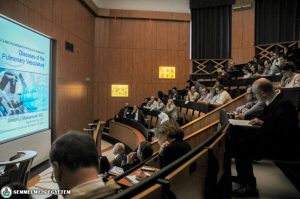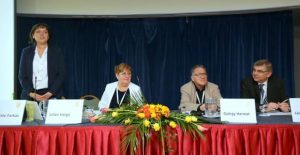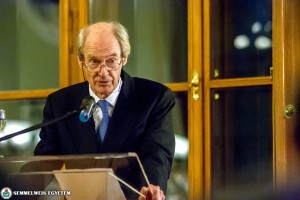There were close to 300 in attendance at the 44th Annual Meeting of the European Paediatric Ophthalmological Society (EPOS) held at the Basic Medical Science Centre in September. Topics of discussions included almost all areas of paediatric ophthalmology, with emphasis on the presentation of a handful of specific surgical techniques.
At the opening ceremony, EPOS President Göran Darius Hildebrand (Oxford, UK), President of the Hungarian Ophthalmological Society Dr. Andrea Facskó, and Director of the Department of Ophthalmology Dr. Zoltán Zsolt Nagy welcomed the audience. Dr. Nagy told our website: the right to organize this meeting serves as a testament to Hungary’s activities in paediatric ophthalmology. Organizer Dr. Erika Maka explained that the meeting was partially a tribute to University namesake Ignác Semmelweis in the university’s memorial year. She recalled that at the same time as the first meeting of the European Paediatric Ophthalmological Society in Oxford in 1973, Hungary’s first national Paediatric Eye-Care survey was held, and 20 years later in 1993 the Hungarian Society of Paediatric Ophthalmology and Strabismus was founded. With the development of new paediatric ophthalmic diagnosis and treatment opportunities, a better quality of vision and a better quality of life can be provided to children.
 The main theme of the Annual Meeting centred around imaging in paediatric ophthalmology. As mentioned, new developments in technology have resulted in the development of new methods that are costly but essential to ensure proper care. 23 invited and 13 free presentations, as well as 3 video presentations took place. The invited presenters were renowned international experts in their specific area. Among the presidents of the nine meeting sessions, domestic experts on the topic in question also took part. EPOS’ newly introduced round-table discussion looked at the different aspects of the optic disc drusen. Meeting participants had the opportunity to take advantage of 99 different poster presentations and the data they offered, 40 of which were also presented orally. At the Annual Meeting, nearly all aspects of paediatric ophthalmology were discussed, and in addition to diagnostic methods surgical techniques were also presented (refractive errors, visual field and optic nerve changes, lesions of the eye socket, eye diseases, cataracts, glaucoma, aniridia, retinoblastoma, ROP, cystinosis, neurofibromatosis, retinal diseases).
The main theme of the Annual Meeting centred around imaging in paediatric ophthalmology. As mentioned, new developments in technology have resulted in the development of new methods that are costly but essential to ensure proper care. 23 invited and 13 free presentations, as well as 3 video presentations took place. The invited presenters were renowned international experts in their specific area. Among the presidents of the nine meeting sessions, domestic experts on the topic in question also took part. EPOS’ newly introduced round-table discussion looked at the different aspects of the optic disc drusen. Meeting participants had the opportunity to take advantage of 99 different poster presentations and the data they offered, 40 of which were also presented orally. At the Annual Meeting, nearly all aspects of paediatric ophthalmology were discussed, and in addition to diagnostic methods surgical techniques were also presented (refractive errors, visual field and optic nerve changes, lesions of the eye socket, eye diseases, cataracts, glaucoma, aniridia, retinoblastoma, ROP, cystinosis, neurofibromatosis, retinal diseases).
From Semmelweis, two lectures were held: Dr. Gábor Rudas, director of the MR Research Centre and Dr. Miklós Szabó, associate professor at the 1st Department of Paedatrics, presented on the topic of hypoxic ischemic encephalopathy. Dr. Miklós Resch, associate professor at the Department of Ophthalmology and Dr. Krisztián Nagy, associate professor at the 1st Department of Pediatrics held a video presentation on OCT Angiography, as well as on a new surgical technique for lens operation. The Scientific Committee accepted 16 posters from the Department of Ophthalmology, of which 5 were also presented orally – noted Dr. Nagy.
 The Central Hungarian Region’s Infant Eye Rescue Programme, a joint program between Semmelweis University and the Peter Cerny Foundation and headed by Dr. Erika Maka, was defined as “exemplary” by Dr. Graham Quinn (USA) for its important use of telemedicine screening.
The Central Hungarian Region’s Infant Eye Rescue Programme, a joint program between Semmelweis University and the Peter Cerny Foundation and headed by Dr. Erika Maka, was defined as “exemplary” by Dr. Graham Quinn (USA) for its important use of telemedicine screening.
The managing committee of EPOS granted Budapest the right to hold the Annual Meeting 4 years ago. The Organization Committee work was carried out by the leadership and associates of the Semmelweis Department of Ophthalmology, as well as Dr. Erika Maka, current president of the Hungarian Society of Paediatric Ophthalmology and Strabismus.
Source: Department of Ophthalmology
Photo: Gyula Kiss
Translation: Faye Gillespie


